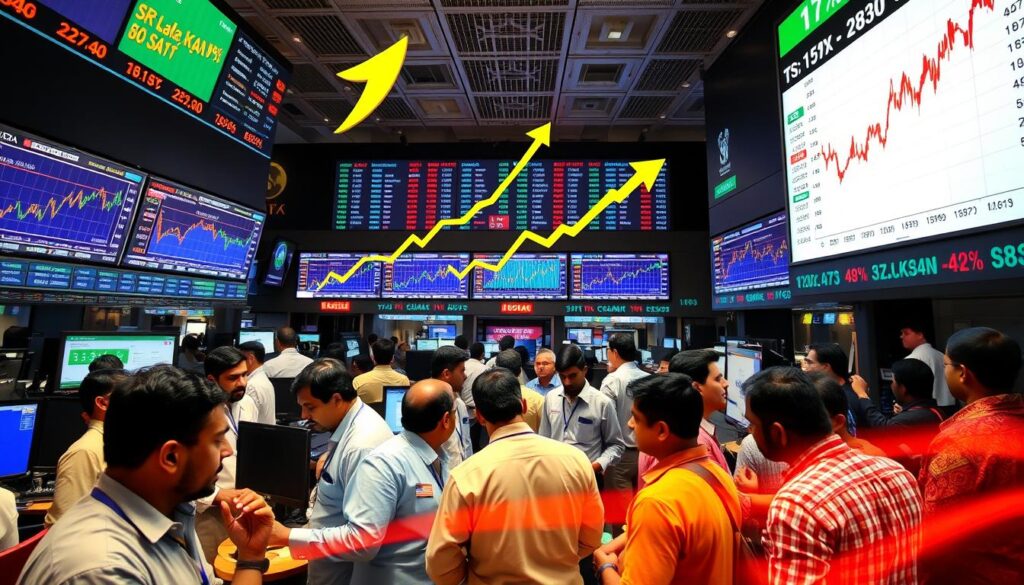Sri Lanka Inflation Hits 70% in Economic Crisis
In September 2022, Sri Lanka’s Inflation surged to a shocking 70%. This reflects the severe Inflation Crisis Sri Lanka is facing. The country has been through tough economic times since it gained independence.
Sri Lanka is now seeking the International Monetary Fund (IMF)’s aid. Talks about a bailout are underway. This isn’t new. Since 1965, Sri Lanka has sought IMF’s help sixteen times. A strict set of reforms may follow this rescue, typical of IMF agreements. Find out more about Sri Lanka’s economic situation and IMF involvement here.
The country also relies on other financial support, including loans from the Asian Development Bank and World Bank. These add up to US$12.13 billion. Despite this, Sri Lanka has looked towards Foreign Direct Investment (FDI) and remittances from overseas. However, COVID-19 has greatly reduced these remittances, worsening the financial strain.
The Sri Lanka Economic Turmoil requires immediate, smart steps towards recovery. Thankfully, there’s a silver lining. Recent trends show a decrease in inflation. This hints at a possible stabilization. Learn more about the government’s actions against the inflation crisis.

Understanding Sri Lanka’s Inflation Crisis
Sri Lanka is facing tough economic times, and the rise in inflation is a big concern. This hike is vividly shown by the jump in the National Consumer Price Index (NCPI). This index measures how much prices have gone up.
Breaking Down the National Consumer Price Index Surge
Last May, prices went up by 45.3% compared to the year before, as shown by the NCPI. This major increase comes from higher prices for many consumer goods. It makes the cost of living in Sri Lanka more expensive, leading to tough economic challenges.
Food Inflation and Energy Costs’ Impact on Inflation Rates
Food inflation alone rose to 58% from the previous year. This happened as energy prices shot up. Higher energy costs also mean more expensive transportation and production. All these elements together push the inflation rate higher in Sri Lanka.

To fix the economy, Sri Lanka is trying various reforms. The Central Bank has tweaked its policies to meet these challenges. The country is also looking for help through global partnerships. This includes a key deal with the International Monetary Fund (IMF). The aim is to control inflation and get financial help during these hard times.
New measures are being set up to deal with inflation’s impacts. One priority is to change cash transfer programs. These changes are meant to help those hit hardest by the rising costs.
| Year | Annual Inflation Rate | Main Contributing Factors |
|---|---|---|
| 2022 | 70% | Post-pandemic economic disruption, high energy costs |
| Mid-2023 | 12% | Regulatory measures, international aid |
As Sri Lanka works towards economic recovery, monitoring inflation is crucial. The government and analysts are focused on reducing the negative impacts. Their goal is to create a stable economic future for the country.
Sri Lanka’s Economic Turmoil and the Role of International Aid
Sri Lanka faces tough times with a huge 70% inflation rate. This situation causes much economic uncertainty. Fortunately, the country is seeking help from international partners. This assistance is crucial for them now, just like it was for other countries in the past.
Learning from nations like Germany and Zimbabwe, unchecked inflation can hurt economies badly. It lowers living standards and shakes confidence in the market. So, international help is very important for Sri Lanka. It will help stop economic decline and bring back stability.
The IMF’s extended fund facility gave crucial support during this economic crisis. This deal, worth $2.9 billion, marks Sri Lanka’s 17th time getting help from the IMF. It aims to fix the country’s debt issues and improve economic health.
Reforming monetary policy is a key part of the plan. It will handle inflation and help keep the economy stable. This approach is vital for Sri Lanka’s future growth and economic stability.
International aid for Sri Lanka isn’t just from the IMF. The World Bank and the Asian Development Bank also plan to help. They intend to provide around $4 billion more. This global support is a ray of hope for the country.
These funds aim to stop the inflation and support recovery. They back up programs improving education and helping children. These efforts are already making a difference during these hard times. With high inflation, such reforms are necessary.
Projects like the Climate Resilience initiative are also key. They focus on improving agriculture and building stronger infrastructures. These steps are essential for Sri Lanka’s economic recovery and growth.





